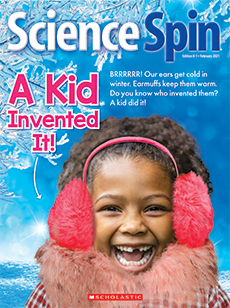October 2021
SLIME!
Academic Standards
Reading Objective:
Children will identify ways that animals use slime to help them survive, and they will describe some physical properties of slime.Next Generation
Science Standards:
Children will identify ways that animals use slime to help them survive, and they will describe some physical properties of slime.
Vocabulary:
venom, mucus, germs
Use these questions to check students’ understanding and stimulate discussion:
1. What does slime help a snail do?
(It helps a snail climb a leaf. Slime helps it stick and not fall.)
2. What animal makes poison slime in its mouth?
(a Komodo dragon)
3. What is the slime in your nose called?
(mucus)
4. What are some words that describe slime?
(sticky, stretchy, thick, etc.)
Go online to print or project the Reading Checkpoint.
- A fish called a hagfish makes slime. If a shark tries to bite the hagfish, the slime chokes the shark. Then the shark can’t bite!
- When a parrotfish gets sleepy, it burps out a slime sleeping bag. This keeps pesky critters away.
- Frog eggs are covered in slime. It keeps them from drying out.
Materials: slime from the recipe in the magazine; objects to test such as pencils, pens, crayons, paper, and/or blocks and small toys; copies of the skill sheet
Overview: Children explore the sticky property of slime by testing what common classroom objects they can pick up with it.
Directions:
- Before the activity or as a class, make the slime in the magazine. You may want to double or triple the recipe so that each group of 3-4 kids has a handful of slime to work with. Each testing station should also have several classroom objects to test.
- Remind students that slime often helps because it is sticky. How sticky is their slime? They will test what sticks to it!
- Give students a copy of the skill sheet. Send them to their testing stations.
- Let students first play with the slime to explore its properties.
- Then they can try picking up various objects with their slime. What sticks? Record results on the skill sheets.
